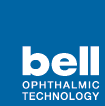 Results of a study from the University of Waterloo bolster the argument for changes in the way pharmacies print instructions to patients. The researchers tested prescription labels based on recommended guidelines and found a significant improvement in their readability over the ones in use now.
Results of a study from the University of Waterloo bolster the argument for changes in the way pharmacies print instructions to patients. The researchers tested prescription labels based on recommended guidelines and found a significant improvement in their readability over the ones in use now.
The study appears in the most recent issue of the Canadian Pharmacists Journal, and is the first to show how improved legibility translates into significantly faster reading times for people with normal vision and with vision loss. When drug labels are easier to read, patients may be better able to adhere to their prescription instructions.
Study modeled various kinds of labels.
Researchers asked 71 adult patients ranging in age and visual acuity to read prototype labels versus sample labels from a pharmacy, with both types of labels containing standardized prescription information. They created the prototype labels using recommended guidelines from CNIB. The sample labels came from 12 different pharmacies, reflecting the disparities patients currently see on prescriptions and used all uppercase lettering for the instructions, problematic for patients who have issues with their vision.
The prototype labels followed recommended guidelines for font size, use of bolding, justification, sentence case and spacing and led to patients reading the prototype labels between three to eight seconds faster than the pharmacy samples. Patients with vision loss struggled a full 10 seconds longer to read the pharmacy samples, compared to the prototype labels.
All uppercase letters slow reading time
“Improving the legibility of prescription labelling would help make labels much more accessible to people who are sighted or have low vision,” said Dr. Susan Leat, a professor in the School of Optometry and Vision Science at Waterloo. “While uppercase is great for emphasizing one word, it actually presents a barrier when overused.”
Patients preferred the prototype labels with characters in the largest possible font (16-point), along with numbers in the instructions printed in uppercase and highlighted in yellow for emphasis.
This is the second phase of this research, which previously showed that more than half of prescription labels fail to meet recommended legibility standards in terms of font size and use of uppercase or lowercase.
